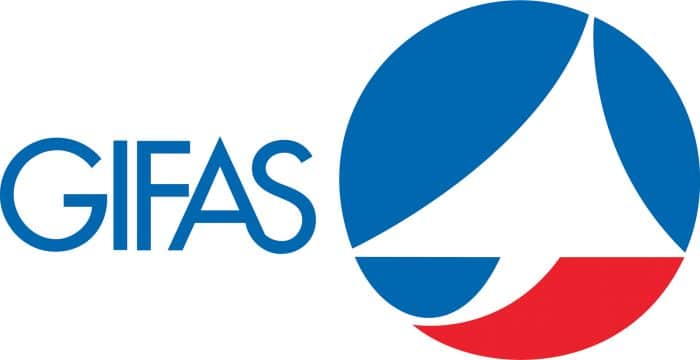On Tuesday 3 May 2016, Marwan Lahoud, President of GIFAS (the French Aerospace Industries Association), presented the 2015 results for the French Aeronautical, Space, Defence and Security Industry.
“2015 was a record year, with turnover increasing to €58.3 billion (+8.5% on a like-for-like basis). Exports accounted for a very large share of this, at €39.4 billion (+14%), representing 83% of consolidated turnover. The civil sector represents 77% of turnover. Our industry is a hub of technological and economic excellence for France, generating growth and investment and creating jobs throughout the country. We are going to continue on this course by making innovation a priority. The aerospace industry, which has always been a trailblazer in technology, is endeavouring to adopt technologies from other fields, whether from large or small innovative companies, even earlier in order to take advantage of technology disruptions in the short term,” stated Marwan Lahoud at the presentation of the profession’s results to the press.
2015 was a record year for orders, which came to €78.3 billion (+2.3% on 2014). The industry’s total order book represents around five years’ production.
“This performance has allowed the industry, once again, to achieve the first surplus in France’s 2015 trade balance of €22.2 billion,” underlined the President of GIFAS, which currently has 364 members, including 164 equipment suppliers and 169 SMEs.
French Supply Chain companies contribute to this growth and value creation with an estimated turnover of €20.3 billion (+10% on a like-for-like basis) and €15 billion of orders.
“This increase reflects the way our industry operates. It is organised into a coherent, unified, responsive and dynamic segment, which gives equipment suppliers and SMEs a share in prime contractors’ growth. The Supply Chain, like the contracting authorities, is mobilised by the ramp-up. French Supply Chain actors are also Tier 1 suppliers to foreign manufacturers, which testifies to their technological excellence,” said Patrick Daher, Vice-President of the GIFAS Equipment Group (GEAD).
A survey commissioned from Banque de France by GIFAS in 2015 shows the sound management of most French Supply Chain companies.
×
× ×
2015 was also a record year in job terms with 185,000 people employed in the industry (180,000 in 2014), 11,000 people recruited and 3,000 net jobs created.
“For the tenth consecutive year, 2015 was a year of recruitment for the industry, which is making a sustained effort to fill jobs in production,” said Marwan Lahoud.
2016 forecasts predict around 10,000 people recruited and a return to positive net job creations.
In particular, technicians and qualified operators (fitters, assemblers, welders, boilermakers, etc.) will be recruited.
There was also a continued focus on combined work-study programmes, with nearly 6,000 young people employed on this basis in early 2015 (+50% compared to 2010).
There was also a continued focus on combined work-study programmes, with nearly 6,000 young people employed on this basis in early 2015 (+50% compared to 2010).
To help its member SMEs become even more competitive, GIFAS has set up a major training and guidance programme, called “Industrial Performance”, which has yielded positive outcomes with joint investments by the French government and industry.
“The programme has been very successful in 15 French regions,” said Marwan Lahoud, “with 406 SMEs and 69 contracting authorities involved so far. We want to move into the second phase to further strengthen French excellence.”
On the subject of the high level of R&D, “which is now at a high 14% of turnover” (70% is self-financed by industrial companies), the president said that “this investment underpins the sector’s future by placing France at the cutting edge of global innovation. Joint government-industry investment is vitally important with the French government’s “future investments programme” (PIA)“.
The President of GIFAS then spoke about the environment, which he said was “a priority for the industry“. Recalling the effort made over 50 years to reduce fuel consumption and hence CO2 emissions (-80%), noise (reduced tenfold) and nitrogen oxides (reduced fourfold), he pointed out that air transport had limited its greenhouse gas emissions to only 2% despite its phenomenal growth over the last 20 years. Among the French solutions for meeting these environmental challenges were the technology demonstration programmes led by the Civil Aviation Research Council. He hoped the Annual General Meeting of the OACI (International Civil Aviation Organization) in September 2016 would make a successful contribution towards tackling the major climate issues facing the aerospace industry.
Marwan Lahoud then spoke at length about the aerospace industry’s strengths for contending with its new competitors. The French aerospace manufacturing sector is in a leadership position in Europe, but its continuing competitiveness depends on a number of factors: close cooperation within the industry and within the government-industry consultation committee, and the success of the Airbus Safran Launchers, in view of the ministerial meeting with the European Space Agency at the end of the year, when fundamental decisions for the launcher industry will be made.
Marwan Lahoud highlighted the aerospace industry’s initiatives to develop new services and applications using satellite data, to create a symbiosis between the aerospace and digital industries.
Another strong point is that the French industry has become a key partner in the most ambitious space missions. For example, the Exomars probe, which is currently pursuing its long, almost 500 million kilometre voyage through space to the red planet, was, in part, successfully produced by Thales Alenia Space. Airbus Defence and Space developed the first European rover, which will be used to search for possible signs of past or present life below the surface of Mars.
×
× ×
In conclusion, Marwan Lahoud pointed out that the French aeronautical and space sector is a hub of economic excellence and innovation, a sector creating jobs, whose men and women are their most invaluable asset.
Tomorrow’s success depends on enduring skills, the strategic choices made in R&D, and the government’s determination to continue on the course of joint investment.
GIFAS







Be the first to comment on "Review of 2015: a record year for the French Aeronautical, Space, Defence and Security Industry"